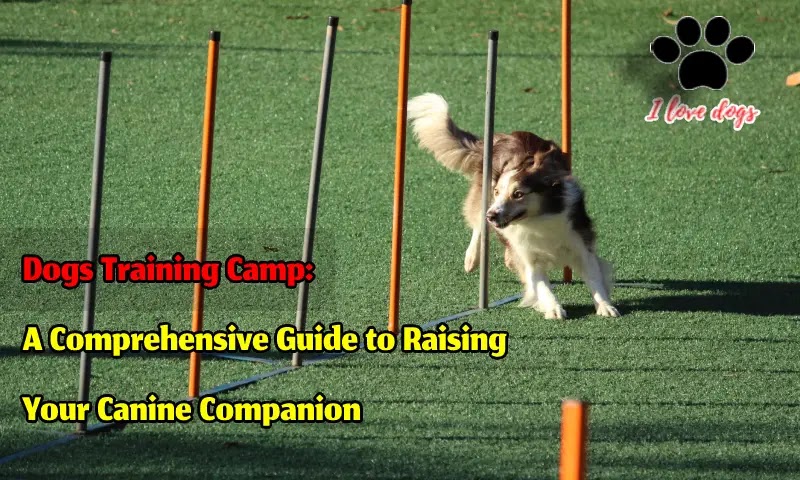Introduction
- A comprehensive guide to dogs training camp
- Importance of dog training for the pet and owner's benefit
- Understanding canine behaviour
- Common dog behaviour issues and how to address them
- Essential commands every dog should know
- Techniques for effective obedience training
- Understanding advanced training techniques
- Engaging activities to keep your dog mentally stimulated
- Understanding different training methods
- Factors to consider when choosing a training method for your dog
Dogs are wonderful and loyal companions, but without proper training, they can become destructive and difficult to manage. Training provides both the dog and the owner with numerous benefits, including improved behaviour, enhanced obedience, and increased bonding. This guide will take you through the steps of understanding your dog's behaviour, basic obedience training, advanced training techniques, and choosing the right training method for your pet.
1: Understanding Your Dog's Behaviour
One of the first steps in training your dog is to understand their behaviour. Dogs communicate through body language and vocal cues, and it's important to be able to interpret these signals to effectively address any issues. Common behaviour issues include destructive chewing, excessive barking, and aggression. By understanding your dog's behaviour and working with a trainer or behaviourist, these issues can be addressed and resolved through positive reinforcement training techniques.
2: Basic Commands and Obedience Training
Basic obedience training is the foundation of your dog's training and includes commands such as "sit", "stay", "come", and "heel". These commands help establish boundaries and create a clear line of communication between the owner and the pet. Effective obedience training requires patience, consistency, and positive reinforcement. Reinforcing desired behaviour with treats, praise, and affection will help create a strong bond and reinforce the obedience training.
3: Advanced Training Techniques and Activities
Once basic obedience training is established, you can move on to advanced training techniques, such as agility training and scent work. These activities provide mental stimulation and physical exercise for your dog, helping to prevent boredom and destructive behaviours. Advanced training techniques also help to strengthen the bond between the owner and the pet and reinforce obedience training.
4: Choosing the Right Training Method for Your Dog
There are numerous training methods available, and it's important to choose the right one for your dog. Factors to consider include the dog's breed, age, personality, and any behaviour issues. For example, positive reinforcement training is often effective for younger, more excitable dogs, while older dogs may benefit from a more structured, obedience-based training program. Working with a professional dog trainer or behaviourist can help you choose the best training method for your pet.
Top Features of a Dogs Training Camp
- Experienced and knowledgeable trainers: The trainers should have a good understanding of dog behavior and training techniques, as well as experience in working with dogs of different breeds and temperaments.
- Positive reinforcement-based training methods: The camp should use positive reinforcement techniques, such as treats, praise, and play, to reward desired behavior, rather than punishment or physical force.
- Customized training programs: The camp should offer customized training programs tailored to the individual needs and abilities of each dog and owner.
- Small class sizes: Classes should be kept small to allow for personalized attention and maximum learning.
- Safe and secure facilities: The camp should have safe and secure facilities, with well-maintained equipment and plenty of space for training and exercise.
- Engaging activities and challenges: The camp should offer a variety of engaging activities and challenges to keep dogs mentally and physically stimulated and to reinforce their training.
- Continued support and follow-up: The camp should provide ongoing support and follow-up after the training program is completed to ensure that the training is maintained and to address any issues that may arise.
Conclusion
- Recap of key points covered in the guide.
- The benefits of training for your dog and your relationship with them.
In conclusion, dog training is an essential aspect of raising a happy and well-behaved companion. By understanding your dog's behaviour, providing basic obedience training, engaging in advanced training techniques, and choosing the right training method, you can create a strong bond with your pet and enjoy a lifetime of companionship. Training not only benefits your dog but also strengthens the bond between you and your furry friend.

Comments